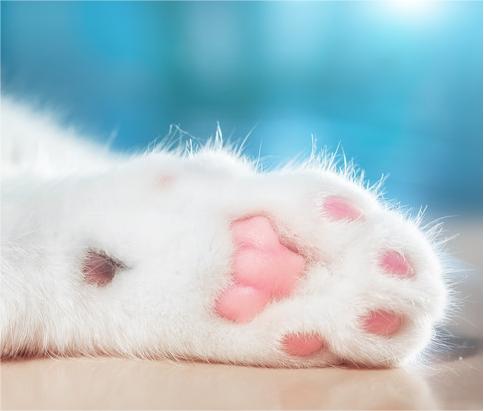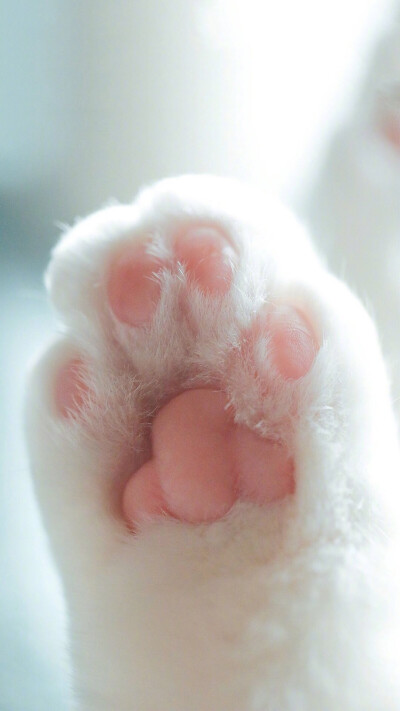How to trim your kitten’s claws?
Owner holding ginger kitten’s paw
Get your kitten used to the idea of claw trimming from an early age. A good way to start is to ‘pretend trim’ where you apply slight pressure to your cat’s toes, to expose the claw, and then offer them a reward or p
raise.
Whilst you’re checking your cat’s claws, give their paw pads and in between their toes a once-over too, to make sure everything is ship-shape and squeaky clean.
Cats, like humans, can get in-growing toenails. If you suspect a claw is growing into their pad, get in touch with your vet, as it may need medical attention.
Extra weekly cat and kitten care checks
As well as brushing their coat and taking care of their claws, there are a few extra checks you can do to make sure your moggy is in tip-top condition.
Check that your cat’s ears are clean and smell fresh. If they’re dirty, smell bad, are red or itchy or if your cat keeps shaking their head, contact your vet. Ear mites are a common problem, particularly in younger cats.
woman checking grey cat’s fur
Run your hands all over your cat’s body. Feel for any scratches, lumps, bumps or spots that seem tender to them. If you’re concerned about anything, get in touch with your vet.
Check their eyes and nose and contact your vet if you notice any discharge or redness.
Take a look under your cat’s tail. Their rear end should be clean. If it’s dirty or there are signs of worms or soreness, visit your vet.
Finally, run your hand against the direction of the coat, to fluff their hair up. Check the hair roots and skin for signs of parasites, or flea dirt (black specks). You can prevent infestations with regular flea control but, if it’s too late, your vet will be able to advise you on treatments.
Bathing your cat or kitten
Most cats go through their lives without having to take a bath, but sometimes a quick dip is unavoidable. They may need a special shampoo to treat a skin condition, to clear up after an upset stomach or as a clean-up operation after getting something in their fur whilst out exploring.
Despite popular belief, some cats take to baths like ducks to water, especially if they’ve had the occasional warm bath from an early age. If your moggy makes it difficult for you to bathe them, a groomer will be happy to do it for you. However if you’d like to handle it yourself, follow these tips for a worry-free wash.
Be careful with the water temperature. Too hot will scald your cat, and too cold can make them uncomfortable or even make them unwell.
Handle your cat with care during bathing to put them at ease, and offer plenty of praise and reassurance. Food treats can be useful and it will definitely be easier if you have a second person to help – especially if they try to escape!
Looks out for signs that your cat is getting stressed. Cats may find bathing frightening, so take care not to be bitten or scratched. If you’re concerned, speak to expert groomer.
Make sure the shampoo you use is specifically designed for cats and check whether it needs to be left on for a given period of time (this may be the case with a medicated shampoo). Be careful to avoid getting shampoo into sensitive areas such as their eyes or ears.
If your cat is unhappy being bathed, try washing just the parts that really need it to cut down time in the tub.
Rinse your cat thoroughly to get rid of any soap residue
Afterwards, dry them with a warm towel and keep them cosy until they’re dry. Avoid a hairdryer unless your cat has been used to them from a young age, as it may frighten them.
If you have more than one cat, bath time can cause them to fight, especially if they’re stressed. Separate your bathed cats until they’re calm, then rub them all down with the same towel to distribute their scents.
Post time: Mar-21-2024



